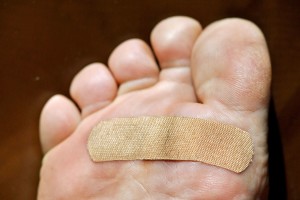 A non-healing ulcer can occur for several reasons, whether it is a pressure ulcer, a venous ulcer or a diabetic ulcer. Here are some of the common causes of each.
A non-healing ulcer can occur for several reasons, whether it is a pressure ulcer, a venous ulcer or a diabetic ulcer. Here are some of the common causes of each.
Pressure Ulcer
Pressure ulcers are a non healing ulcer occurs when hard surfaces compress skin and tissue together. This compression decreases the amount of oxygen and blood in the area, leading to tissue damage. It typically affects the heels, buttocks or hips. People who are confined to a wheelchair or bed or unable to move without help are at the highest risk for this problem.
There are some ways to reduce the chances of this issue occurring, however. For instance, it is critical that you control your cholesterol and blood pressure, and be extremely vigilant when it comes to managing diabetes if you have the disease. Wash your feet and thoroughly dry them each day and keep your skin lubricated.
Venous Ulcer
Varicose veins and other vein problems can lead to swelling of tissue and lead to a non healing ulcer. In many cases, the skin will turn purple or born in the affected area before the ulcer appears – typically on the side of the ankle and calf. Preventive tips include exercising regularly, wearing support hose if needed, keeping your legs and feet dry and clean, and avoiding sodium in your diet.
Diabetic Ulcer
If you have diabetes, you may have damage to your peripheral nerves that can lead to numbness in the bottom of the foot. You may suffer a wound without even knowing it because of your lack of sensation in the area. This wound can ultimately turn into a diabetic ulcer.
Thankfully, there are several ways to treat a non healing ulcer. If you are experiencing this problem, come see an expert with DFW Wound Care Center as soon as you can. Contact us online or call 972-665-6292 (Plano), 972-318-2383 (Lewisville), 972-607-9643 (Irving) to schedule an appointment.
Contact us
Schedule an appointment
with our specialists by contacting us or calling our:
